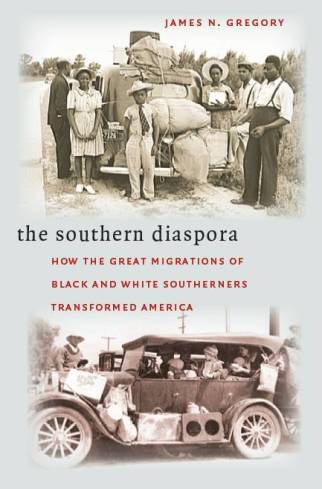|
That
the Southern Diaspora helped African Americans in their historic struggle for
civil rights is widely understood. But how it did so has never been carefully
explained. Indeed since the 1960s scholars have written about black political
development in ways that undervalue the role of the northern Black Metropolises.
Partly it is because the southern civil rights struggles of the 1950s and 1960s
loom so large that there is a tendency to treat everything that came before as
prologue. Partly it is because few of the historians and political scientists
who have written on the subject have cared enough about political geography. The
result is an oddly inconsistent narrative that always includes the point that
the black diaspora brought with it voting rights and increased political
visibility but fails to follow up in any consistent manner.
This chapter does so, making the point that the Black
Metropolises provided the base for a sequence of extremely important political
developments that were not just prelude but precondition to the southern civil
rights breakthroughs of the 1960s. There was a particular regional dynamic
behind the twentieth century drive for rights and equality, an almost
Archimedean logic: African Americans had to leave the South in order to gain the
leverage needed to lift it and the rest of the nation out of Jim Crow
segregation....
It was
once well understood that the modern civil rights movement began in the 1940s
and that it took shape in the cities of the North. “When, in 1990 perhaps or the
year 2000, men come to search for the truly decisive epoch in American race
relations,” Lerone Bennett, Jr. wrote in his 1965 book Confrontation: Black
and White “it seems likely that they will seize on the decade of the
forties.” The Mississippi-born, Chicago-based contributing editor of Ebony
magazine understood that the great events that had unfolded after 1954—the
federal court decisions that had opened up the battle for school desegregation,
the electrifying confrontations in the South and the mediagenic movement that
Dr. Martin Luther King Jr. led, the congressional alliance that had, months
before his book appeared, passed the historic 1964 Civil Rights Act –that all
that rested upon a foundation that had been built in the Black Metropolises in
the 1940s.
Bennett,
however, was wrong about the historiography of 1990. By that year the story of
the 1940s Civil Rights movement had almost been lost as historians focused on
the South and ignored what preceded it....
FEPC was not the only agenda
of the northern civil rights movement.
The other
big fight was over
urban space. The struggle to break down the walls of urban segregation, to open
up commercial and recreational spaces, and especially to gain access to housing
and residential space escalated through the 1940s and across the 1950s. It was
for the most part an unglamorous, grassroots campaign: incremental, store by
store, block by block, a complicated story of political combat with none of the
grand victories and not much of the headline-grabbing attention that the
southern desegregation campaigns achieved a decade or so later. But out of it
came tactics and organizations that would be used in the southern efforts, and
also measurable changes in the distribution of urban space. Slowly in the course
of these struggles
black people in the
northern and western cities
began to
dismantle
in-city
systems of
containment and began to share major portions of
their cities,
moving into jobs, consumer relations, and housing
from which they had been forcefully excluded....
excerpts from Ch
7 "Leveraging Civil Rights"
|

The
Southern Diaspora: How The Great Migrations of Black and White Southerners
Transformed America
is the first historical study of the Southern Diaspora in its entirety. Between
1900 and the 1970s, twenty million southerners migrated north and west. Weaving
together for the first time the histories of these black and white migrants,
James Gregory traces their paths and experiences in a comprehensive new study
that demonstrates how this regional diaspora reshaped America by "southernizing"
communities and transforming important cultural and political institutions.
Read the catalogue
description and advance reviews.
Read the
Preface and
Introduction.
|